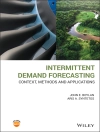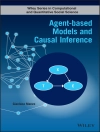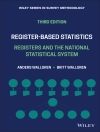This book on counting statistics presents a novel copula-based approach to counting dependent random events. It combines clustering, combinatorics-based algorithms and dependence structure in order to tackle and simplify complex problems, without disregarding the hierarchy of or interconnections between the relevant variables. These problems typically arise in real-world applications and computations involving big data in finance, insurance and banking, where experts are confronted with counting variables in monitoring random events.
In this new approach, combinatorial distributions of random events are the core element. In order to deal with the high-dimensional features of the problem, the combinatorial techniques are used together with a clustering approach, where groups of variables sharing common characteristics and similarities are identified and the dependence structure within groups is taken into account. The original problems can then be modeled using new classes of copulas, referred to here as clusterized copulas, which are essentially based on preliminary groupings of variables depending on suitable characteristics and hierarchical aspects.
The book includes examples and real-world data applications, with a special focus on financial applications, where the new algorithms’ performance is compared to alternative approaches and further analyzed. Given its scope, the book will be of interest to master students, Ph D students and researchers whose work involves or can benefit from the innovative methodologies put forward here. It will also stimulate the empirical use of new approaches among professionals and practitioners in finance, insurance and banking.
Daftar Isi
Preface.- I The Main Ingredients.- 1 Clustering.- 2 Copula Function and C-volume.- 3 Combinatorics and Random Matrices: A Brief Review.- II Mixing the Ingredients: A Recipe for a New Aggregation Algorithm.- 4 Counting a Random Event: Traditional Approach and New Perspectives.- 5 A New Copula-based Approach for Counting: The Distorted and the Limiting Case.- 6 Real Data Empirical Applications.
Tentang Penulis
Enrico Bernardi is a Full Professor of Mathematics at the University of Bologna, Italy. His main research topics are the analysis of linear partial differential equations, in particular the well-posedness of the Cauchy problem for hyperbolic operators with double characteristics, and exploring the solutions of stochastic differential equations and their applications to modeling.
Silvia Romagnoli is an Associate Professor of Mathematical Methods for Economics and Actuarial/Financial Sciences at the University of Bologna, Italy. Her scientific research chiefly focuses on the applications of stochastic models to finance and insurance, particularly with regard to multidimensional problems. She has published extensively in prominent international journals including Mathematical Finance and Finance and Stochastics. She is a co-author of a book on Dynamic Copula Methods in Finance, published by Wiley in 2012.












